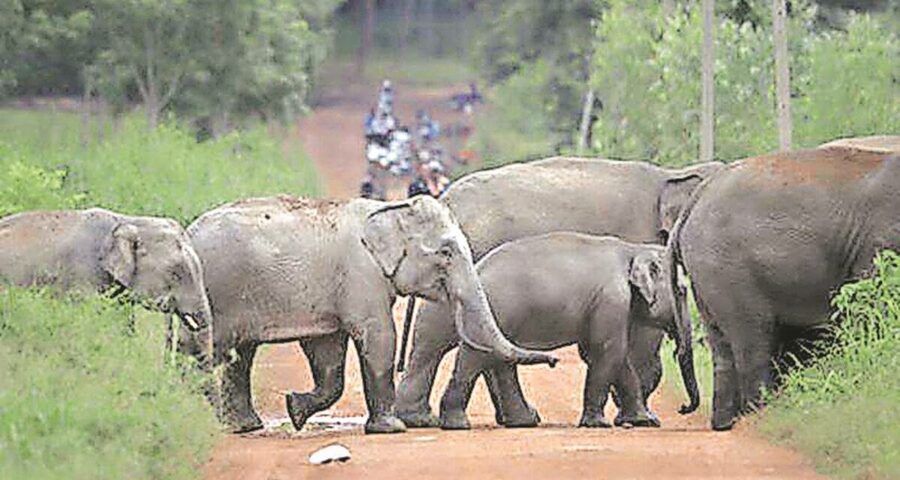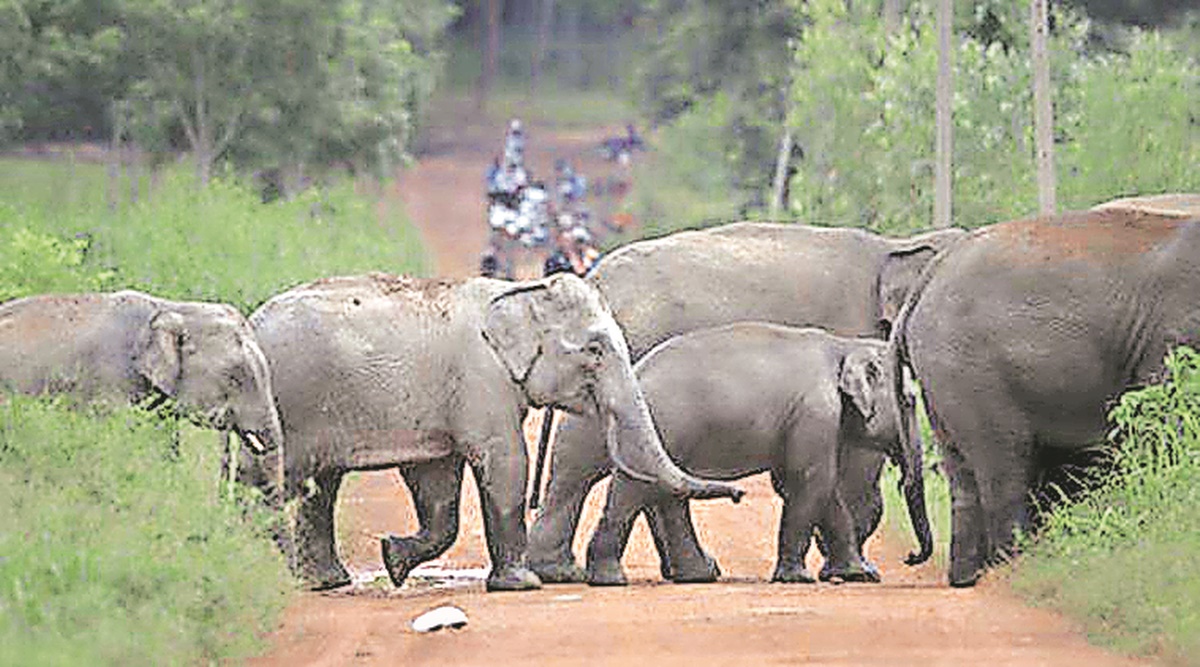To be conducted along with the ministry’s partners such as Wildlife Institute of India, it will involve identification of each elephant, their clusters as well as health and nutrition level of each elephant – for the first time.
THE MINISTRY of Environment, Forests and Climate Change will embark next year on a comprehensive elephant count project, on the lines of tiger population assessment and estimation. To be conducted along with the ministry’s partners such as Wildlife Institute of India, it will involve identification of each elephant, their clusters as well as health and nutrition level of each elephant – for the first time.
To mark World Elephant Day, Environment, Forest and Climate Change Minister Bhupender Yadav on Thursday released the population estimation protocol to be adopted for the project. This will also be the first time tigers, leopards and elephants will be counted together, said ministry officials.
Speaking on the occasion at an event at Indira Paryavaran Bhavan, the minister stressed on the involvement of local communities and indigenous people in the conservation of elephants and said that a bottom-up approach is the way forward, which will also help in minimising human-elephant conflict.
“It is important to have a scientific approach to conservation. But it is also equally important to involve local communities and their traditions as a part of the conservation,” Yadav said.
Later in the day, he tweeted: “There has been a need to harmonise population estimation methods along more scientific lines. The MoEFCC for the first time is converging elephant and tiger population estimation.”
Asian elephants are listed as “Endangered” on the IUCN Red List of threatened species. This has been done as most of the range nations, except India, have lost their viable elephant populations due to loss of habitat and poaching. According to current population estimates, there are about 50,000-60,000 Asian elephants in the world, with more than 60 per cent of them in India.
The procedure for next year’s assessment involves “rigorous statistical analyses of ground data on animal signs, human impacts, habitat attributes and absolute density; it is far more accurate than earlier methods”, said ministry officials.
The assessment will be conducted in three phases and involve ground surveys, analyses of remotely sensed data and camera traps. While this process has always been used for tigers and leopards, elephant population will be assessed using this method for the first time.
The agencies will also assess human footprint indices, landscape characteristics and habitat quality. Individual elephants will be identified using a panel of microsatellite markers from dung DNA.
As part of Phase III, trained biologists and department personnel will sample elephant groups for demographic parameters and body condition. Elephants will be aged based on size and body characteristics like ears and tusks. Animals will be scored for nutritional status based on body condition.
Source: Read Full Article


